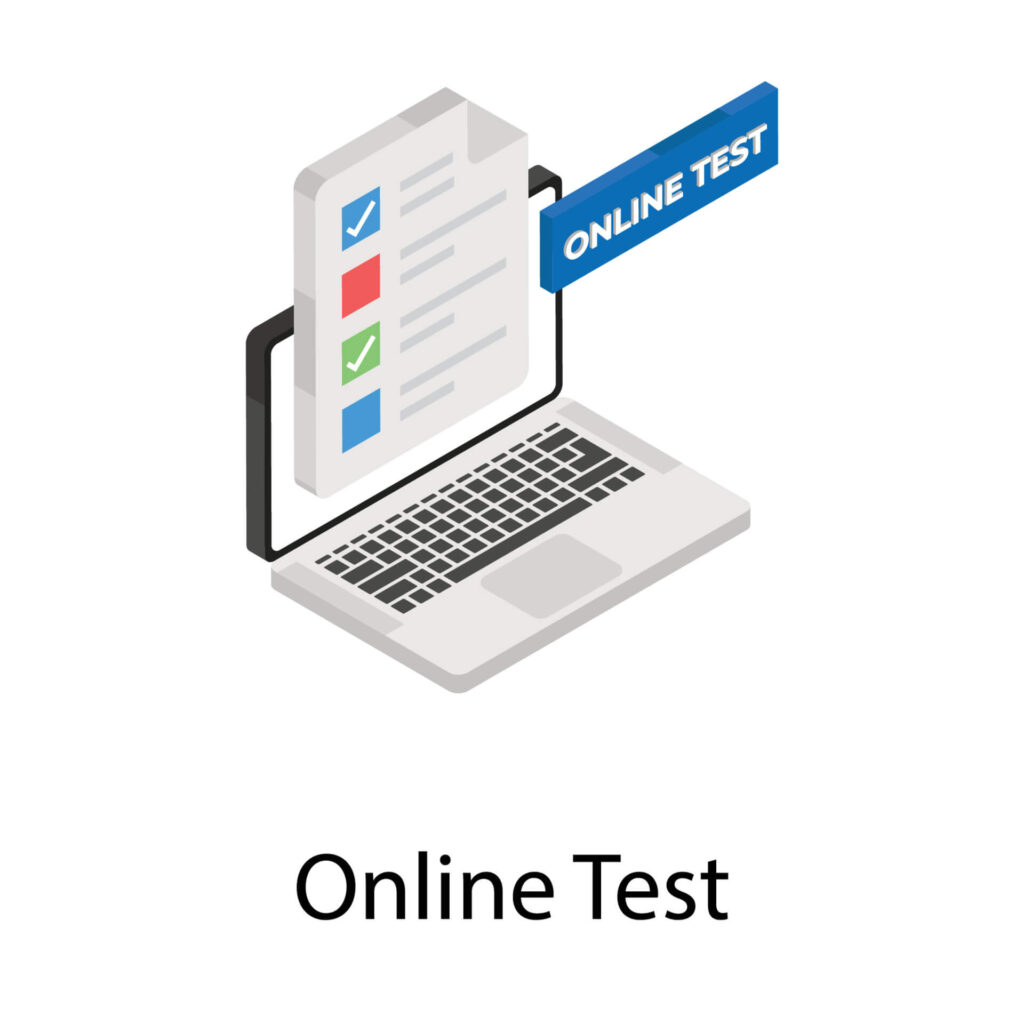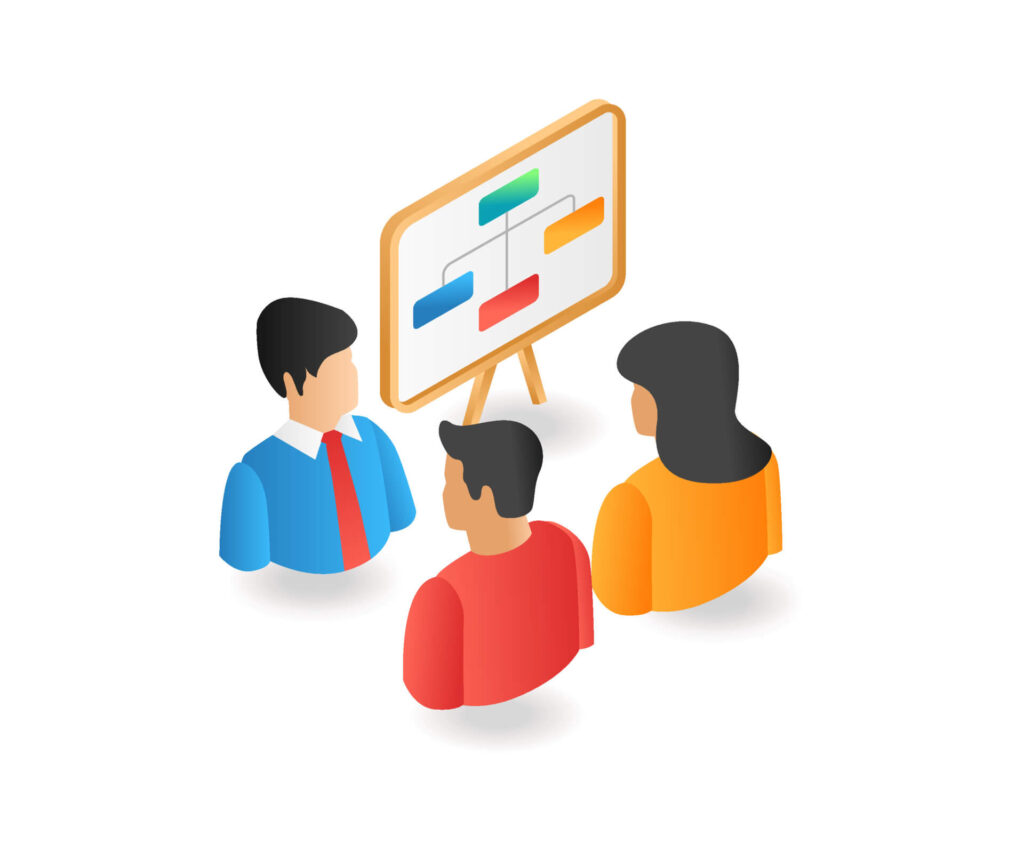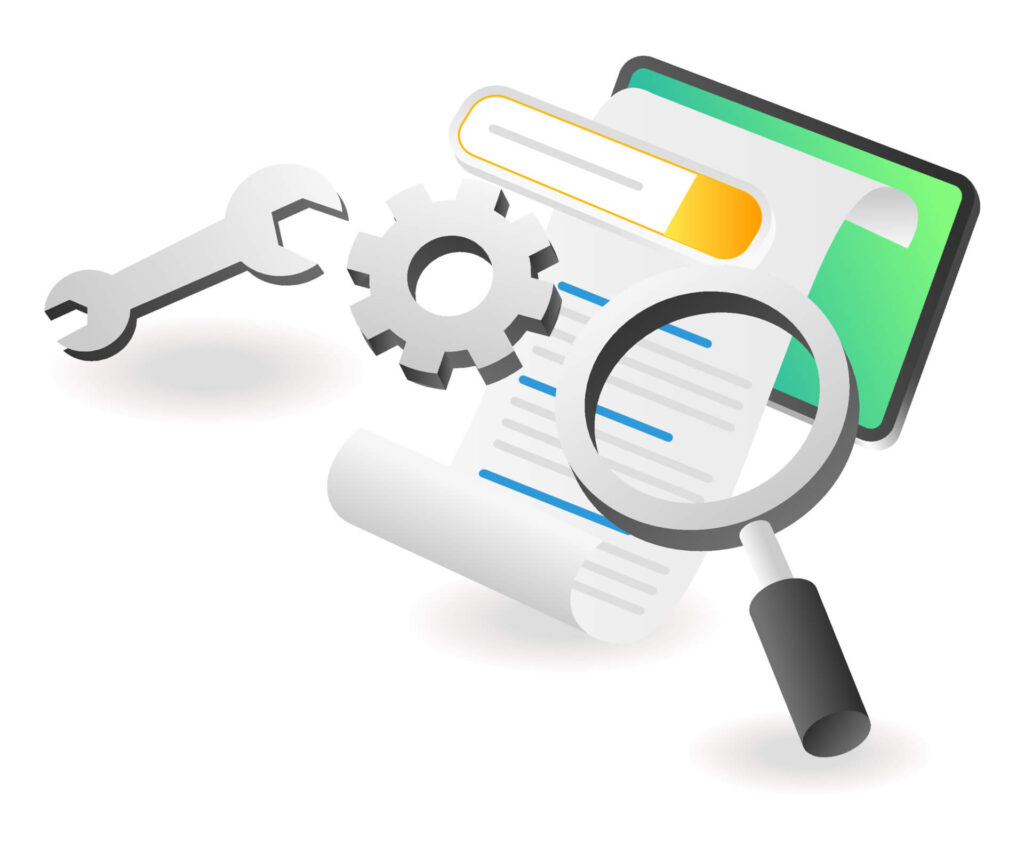Are you looking to optimize your B2B SaaS product’s user experience but unsure where to start? Usability testing is the answer you’ve been searching for. In this comprehensive guide, we’ll dive deep into the world of usability testing, shedding light on its importance, various methods, and best practices. By the end of this blog post, you’ll have the knowledge and tools necessary to start improving your product’s user experience through effective usability testing.
Key Takeaways
- Usability testing is a research method used to evaluate user experience and optimize product design.
- It involves qualitative and quantitative methods, moderated and unmoderated tests, remote and in-person sessions and all with clear objectives.
- Data analysis techniques prioritize issues for successful communication of results and data driven decision making for continuous improvement.
Understanding Usability Testing
Usability testing, also known as user testing, is a method to evaluate a product’s user experience by observing real users performing tasks, identifying issues, and improving the design. It plays a pivotal role in ensuring a product is easy to use, efficient, and meets user expectations. As a result, usability testing contributes to increased user satisfaction and revenue.
We will delve into the definition, significance, and ways usability testing can dramatically improve the user experience of your B2B SaaS product.
Definition and Purpose
Usability testing is a research method that allows designers and developers to identify potential issues or areas for improvement by observing how real users interact with a SaaS product. The ultimate purpose of usability testing is to:
- Ensure that a product is user-friendly
- Ensure that a product is effective at solving problems
- Ensure that a product meets customer expectations
- Increase user satisfaction
- Boost conversions and revenue

Facilitators are instrumental in usability testing, as they:
- Guide participants through particular tasks
- Make sure the test produces accurate, quality data
- Avoid unintentionally influencing the participant’s behavior
The observation and analysis of user behavior during these tasks can yield valuable insights, thereby improving the overall user experience of the product.
Importance of Usability Testing
The paramount importance of usability testing is undeniable. It uncovers potential problems that designers may not be aware of and can validate prototypes before they are released to the market. Identifying and rectifying usability issues early in the development process enables teams to:
- Avoid shipping products that customers won’t use
- Craft a more efficient and engaging user experience
- Improve user satisfaction and retention
- Reduce development costs and time
- Increase the likelihood of product success
Usability testing is a crucial step in the design and development process, as it helps identify usability problems. A well-prepared usability testing report can provide valuable insights for improvement.

Furthermore, usability testing helps gauge user experience by collecting both qualitative and quantitative data on user behavior and performance. Collecting feedback from actual users allows companies to leverage data for decision-making, enhancing their product’s design and functionality, and ultimately, creating a more successful and user-friendly product.
Types of Usability Testing Methods
There are a plethora of usability testing methods available, each with its own unique advantages and focus. This allows researchers to choose the most suitable approach for their specific needs.
We will examine various usability testing methods in this section, covering qualitative and quantitative, moderated and unmoderated, and remote versus in-person testing.
Qualitative vs. Quantitative
Qualitative and quantitative usability testing methods are distinct in their approach to understanding user experiences. Qualitative usability testing focuses on user experiences and their preferences, often employing techniques such as think-aloud studies, where participants verbalize their thoughts while using the product. This approach enables researchers to gain insights into the users’ emotions, motivations, and reasoning behind their actions.
On the other hand, quantitative usability testing focuses on collecting numerical data to measure user performance and behavior. This method often involves tracking metrics such as task completion rates, time spent on tasks, and error rates. Quantitative data allows for an objective assessment of the product’s usability and helps researchers make informed decisions about design improvements.
Moderated vs. Unmoderated
Moderated and unmoderated usability testing methods differ in the level of involvement from the facilitator. In moderated usability testing, a facilitator guides the participant through specific tasks, providing clarification and assistance if needed. This method allows for direct interaction between the facilitator and the participant, ensuring a better understanding of the participant’s thought process and potential issues with the product.
Unmoderated usability testing, on the other hand, relies on recorded user actions and feedback without the presence of a facilitator. This method enables participants to interact with the product in their natural environment, providing more realistic and objective feedback.
Additionally, unmoderated testing is often more cost-efficient and can be conducted remotely, allowing access to a wider audience and diverse user groups.
Remote vs. In-Person
Remote and in-person usability testing methods cater to different needs and resources. Remote usability testing involves participants located at different sites, providing feedback through online platforms or tools. This method is cost-effective and flexible, allowing researchers to access a diverse user base without geographical constraints. Conducting remote usability tests is especially beneficial when testing products that cater to a global audience, as it ensures a more accurate representation of user experiences across different regions.

In contrast, in-person usability testing is typically conducted in a controlled environment, such as a usability lab or research facility. This method allows for more direct interaction and observation of users, providing insights into their non-verbal cues and behavior. However, in-person testing may incur higher costs, require more time, and limit the sample size and geographic scope compared to remote testing.
Ultimately, the choice between remote and in-person usability testing will depend on the specific needs and resources of the research project.
Planning and Conducting Usability Tests
Planning and executing usability tests correctly are critical to ensuring you produce valuable results. In this section, we will delve into:
- Defining objectives
- Formulating test scenarios
- Recruiting participants
- Conducting the test
Adhering to best practices at each stage enables researchers to accumulate valuable user experience insights and make informed decisions for product enhancement.
Defining Objectives
Clearly defined objectives are essential for focusing the usability test on specific aspects of the user experience and ensuring actionable results. When determining objectives, it is important to consider the goals of the product, the target audience, and the desired user experience. To ensure success, objectives should be specific, measurable, and achievable, helping researchers concentrate on the most critical aspects of the user experience.

Defining objectives also helps to establish the metrics and tools needed to measure progress during the testing process. By setting clear goals, researchers can monitor key performance indicators and make informed decisions based on the collected data, ultimately leading to a more effective user experience.
Creating Test Scenarios
Test scenarios are designated tasks or activities assigned to participants during usability testing. These scenarios are designed to simulate real-life situations, enabling researchers to observe how users interact with the product and detect any usability issues. Examples of test scenarios could include operations such as navigating to a particular page, searching for a product, or completing a form.

To provide meaningful insights into the user experience, test scenarios should be realistic and representative of typical user tasks. By creating test scenarios that closely resemble actual user interactions, researchers can gather accurate information about the product’s usability and identify areas for improvement.
Recruiting Participants
Recruiting participants who resemble the target user group is essential for obtaining accurate and relevant feedback. There are several methods available for recruiting participants, such as:
- Creating a recruitment plan with specific criteria
- Partnering with recruitment companies
- Leveraging online platforms and services to connect with potential participants

It’s crucial to screen participants to ensure they meet the necessary criteria for the study. A key objective here is to ensure that participants are ideal users that would fall within the target market for your B2B SaaS product. Your goal should be to improve the user experience for people within your target market.
Beyond that, considering the diversity of the participant pool is a good idea for capturing a wide range of user perspectives. By incorporating individuals from various backgrounds, market segments, usage patterns, and abilities, researchers can identify certain discrepancies within the product and develop more efficient products that cater to a broader audience.
Running the Test
Running the usability test involves guiding participants through specific tasks, observing their behavior, and collecting feedback for analysis. The facilitator plays a critical role in ensuring that the test yields high-quality, accurate data without inadvertently influencing the participant’s behavior.

During the test, it is essential to observe and record:
- User behavior
- Task completion rates
- User satisfaction
- Errors made
This information helps researchers identify patterns, prioritize issues, and communicate findings to the team for improvement.
By closely monitoring the test and gathering feedback, researchers can gain valuable insights into the user experience and make data-driven decisions for product enhancement through user research.
Analyzing and Reporting Usability Test Results
The analysis and reporting of usability test results requires pattern identification, issue prioritization, and communicating findings to the team to understand how to capitalize on the opportunities to improve your SaaS product. We will delve into data analysis techniques, issue prioritization, and effective reporting of findings in this part.
Adhering to these best practices enables researchers to keep their team well-informed and prepared to implement necessary product improvements.
Data Analysis Techniques
Data analysis techniques help uncover patterns in user behavior, identify usability issues, and inform design recommendations. By analyzing both the users’ performance and their sentiments regarding the product, researchers can gain a comprehensive understanding of the user experience.

Various data analysis techniques can be employed in usability testing, depending on the type of data collected and the desired outcomes. For example, quantitative data can be analyzed using statistical methods, while qualitative data may require thematic analysis or affinity diagramming to identify patterns and trends.
By leveraging the appropriate data analysis techniques, researchers can gather valuable insights and make informed decisions about design improvements.
Prioritizing Issues
Prioritizing issues based on severity and impact is essential for efficient design improvements. By evaluating the severity of an issue and its effect on the user experience, teams can focus on the most critical improvements that will have the greatest impact on user satisfaction.
Some strategies for prioritizing issues include:
- Assessing the potential risks and benefits associated with addressing the issue
- Considering the necessary resources
- Giving priority to critical issues that affect the usability of the product
- Evaluating the ‘lift’ for making certain improvements
By prioritizing issues effectively, teams can ensure that their efforts are directed towards the most impactful improvements.
Reporting Findings
Reporting findings effectively involves:
- Providing a high-level overview of the findings
- Presenting clear, concise, and actionable insights to the team for implementing improvements
- Creating an action plan for the team to address usability issues
This ensures that everyone is on the same page when it comes to improving the user experience.

To achieve effective reporting, it’s crucial to maintain open communication within the team and share insights in a way that is easy to understand and act upon. By presenting findings in a clear, actionable format, teams can work together to implement improvements and continuously enhance the user experience.
Implementing Changes and Iterating
Implementing modifications and making iterations based on usability test outcomes is vital for ongoing improvement and sustaining a user-friendly product. In this section, we will discuss data-driven decision-making and the significance of constant testing throughout the product life cycle.
Staying committed to enhancing the user experience allows teams to keep their product current and responsive to evolving user needs.
Making Data-Driven Decisions
Making data-driven decisions ensures that design changes are based on real user feedback and behavior, leading to a more effective user experience. By analyzing usability test data and evaluating the results, researchers can identify patterns, trends, and areas for improvement, thus informing data-driven design recommendations.

To make data-driven decisions, it is essential to follow these steps.
- Define goals and metrics
- Collect and analyze data
- Formulate a hypothesis
- Run A/B tests
- Evaluate results
- Make data-driven decisions
By following this process, teams can ensure that their product is continuously optimized based on real user feedback and insights, ultimately leading to a more successful and user-friendly product.
Continuous Testing
Continuous testing throughout the product life cycle helps teams stay updated on evolving user needs, maintain a user-friendly product, and address emerging issues. This iterative approach to usability testing enables teams to make continuous improvements, ensuring that the product remains up-to-date and meets the changing demands of the target audience.
Incorporating continuous testing into the development process allows teams to monitor key performance indicators and make informed decisions based on user feedback and insights. Remaining dedicated to continuous enhancements and staying aligned with user needs enables teams to maintain a user-friendly and competitive product in the market.
Compass Working Capital
Compass Working Capital is a nonprofit organization that supports a program called Family Self Sufficiency (FSS for short). They had a goal to help more organizations enroll more clients in need into the program by providing an Enrollment Portal which became a B2B SaaS product.

To help them design the user experience for this product, I managed a team that led several rounds of usability testing. That testing yielded actionable results based on designs we had created to manage the client sign up workflow. Based on the data, we were able to create a more streamlined sign up workflow which boosted enrollment by more than double.
These results speak to the sheer power of usability testing in terms of what it can do to help boost the performance of B2B SaaS products. Read more about my Compass case study here.
If you’d like help managing a project like this to improve your B2B SaaS product, please schedule a free strategy session with me so I can learn more about how I may be able to help you and your team.
Usability Testing Tools and Resources
Usability testing tools and resources can streamline the testing process, facilitate data collection and analysis, and support continuous improvement of the user experience. By helping researchers run usability tests more efficiently, these tools and resources can automate certain tasks, such as data collection and analysis, making the testing process more effective.
Some popular website usability testing tools include Maze, a research tool that enables teams to conduct website usability tests and identify issues stemming from browser updates, third-party integrations, or changes in user behavior patterns.
Other resources, such as automated testing frameworks, test management tools, and cloud-based testing platforms, can also assist in making the usability testing process more efficient and informative.
Books
I would be remiss if I didn’t mention Steve Krug and his valuable books on the topic of usability testing. His first book is called Don’t Make Me Think and the second is Rocket Surgery Made Easy. Both of these books are fantastic resources on the topic of usability testing so if you can to dive deeper on this topic, I encourage you to get a copy of either and start there.
Summary
In conclusion, usability testing is a vital aspect of creating a user-friendly and successful product. By understanding the various methods, best practices, and tools available, teams can effectively evaluate and improve their product’s user experience. From planning and conducting tests to analyzing and reporting results, every step in the usability testing process plays a crucial role in ensuring a product meets user expectations and remains competitive in the market.
As technology continues to evolve, so do user needs and expectations. By embracing usability testing and continuous improvement, teams can ensure their products remain up-to-date, user-friendly, and successful in meeting the ever-changing demands of the target audience.
If you’d like help defining a usability testing strategy to improve your B2B SaaS product, please schedule a free strategy session with me so I can learn more about how I may be able to help.
Frequently Asked Questions
What is usability testing with an example?
Usability testing assesses how easily users can interact with an interface, like checking if the “buy now” button on an e-commerce site is easy to find.
It helps improve a product’s design to create a more user-friendly experience.
What are the 4 principles of usability testing?
The four principles of usability testing are measuring, using videos, conducting interviews, and gathering feedback from users.
These techniques enable testers to evaluate how intuitive and user-friendly a product is so that you can identify opportunities for improvement.
What is the main purpose of usability testing?
Usability testing is primarily used to identify usability issues and improve a website or SaaS application’s design, providing an enhanced user experience.
It can help identify areas of improvement, such as navigation, content structure, and user interface elements. It can also help to identify user preferences and behaviors, which can be used to inform design decisions.
What are the different types of usability testing methods?
Usability testing methods can generally be divided into qualitative vs. quantitative, moderated vs. unmoderated, and remote vs. in-person testing.
How do you prioritize issues discovered during usability testing?
Prioritize issues according to their severity and impact, with a focus on addressing the most critical improvements that will have the greatest impact on user satisfaction.


